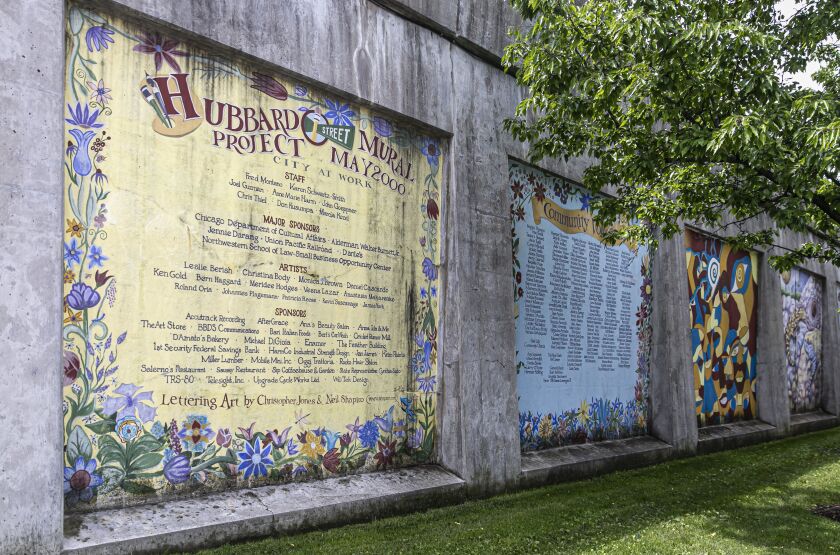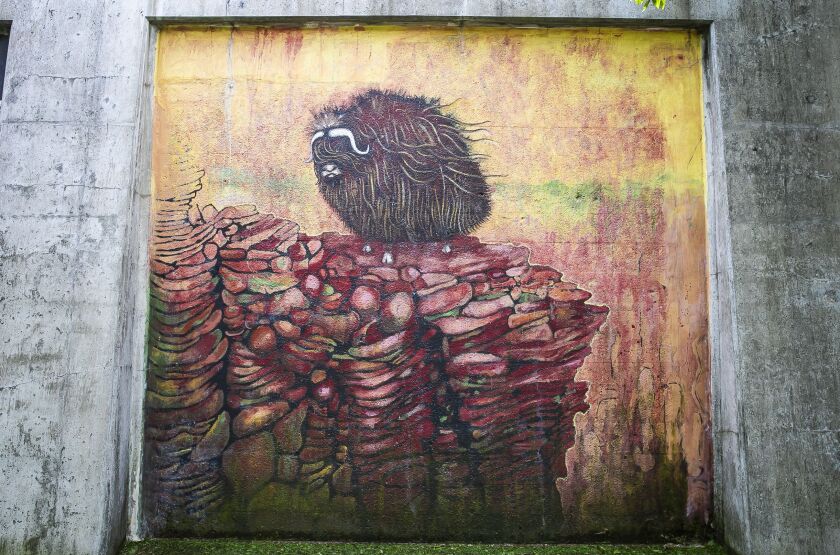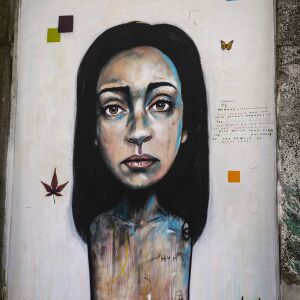In the 1970s, a railroad viaduct along Hubbard Street west of downtown Chicago became a sprawling canvas.
Artist Ricardo Alonzo and dozens of students spent years painting environment-themed murals on the concrete walls, including images depicting endangered animals, global warming and air pollution.
It was one of the largest expanses of public murals in Chicago. Now, it’s also one of the oldest in the city.
Many of the images are still visible. But many have chipped, faded or been marred by graffiti.
Now, an ambitious restoration effort is underway. Called the B_Line Project, it’s being spearheaded by another artist, Levar Hoard, whose team is touching up some of the murals and painting others over with new art. Ultimately, the project will include more than 250 images spanning roughly a mile between Ogden Avenue and Desplaines Street.
“I want to make this the Art Institute of the streets,” Hoard says. “I want people to see the art and be changed, be impressed, be astounded by all of the amazing work that is displayed.
“I was tired of going around the world and seeing amazing street art districts but not seeing it in Chicago.”
Hoard began the B_Line Project in 2017. “B_Line” refers to the trains that make a “beeline” on the nearby tracks, which carry Metra trains between the Loop and Elburn on the Union Pacific West Line. Union Pacific Railroad, which owns the viaduct, gave Hoard permission to paint there.
With the help of private donors, Hoard has hired local artists as well as recruited others from outside the country. So far, all of this has cost around $500,000, Hoard says. He has overseen more than 50 murals and hopes to have an additional 40 finished by the end of the year.
Nina Talamantes, a 24-year-old artist from West Humboldt Park, is one of the artists he’s enlisted to work on Hubbard Street. Her mural features two men of color embracing each other, an image she says is meant to fight stereotypes.
“It’s a big honor,” Talamantes says of being part of the project. “Doing this is bringing more light to the local artists that are here and doing the work to make Chicago a beautiful place and recognize what potential is here.”
While some of the original murals are disappearing, Hoard says that’s the nature of this kind of public art.
“The spirit of street art is that it is changing and it is never guaranteed that it will be there tomorrow,” he says.
Alonzo is 79 now and lives in Arizona. He says Hoard “came to visit . . . last year, and we talked about his plans for the project, and I gave him my blessings.”
Alonzo says he hopes “some of the original work stays” because it’s important for people to be aware “of the things affecting our environment.” But he also appreciates the more “personal style” in the newer murals, which aren’t unified by a single theme or approach.
The oldest murals were painted from 1971 to 1979. They included images of a gorilla, a running wolf and black liquid flowing from a faucet.
Another wave of murals began going up in 2000, after some of the originals were damaged during viaduct repairs. Among those that went up then were murals with images of a tiger, a black rhinoceros and a panda surrounded by bamboo.
The newest murals overseen by Hoard still include animals — there’s a child holding a duck, for one — but also more abstract art that isn’t always easy to define.
It all pleases Alonzo. “It warms my heart that the murals are still going, and I want them to keep it alive and keep it beautiful,” Alonzo he says.
This photo gallery includes many of the murals on Hubbard Street as of of the summer of 2019.
Hoard has spoken with city officials about getting better lighting and sidewalks installed to create a “pedestrian experience.” He hopes his project will be completed by 2022. The murals then will continue to be tweaked and replaced.
“There is no endgame because I want it to be alive and have a heartbeat,” Hoard says. “Every time you come back, there will be something new to see. The nature of street art is that it’s a temporary expression.”































































































































































































